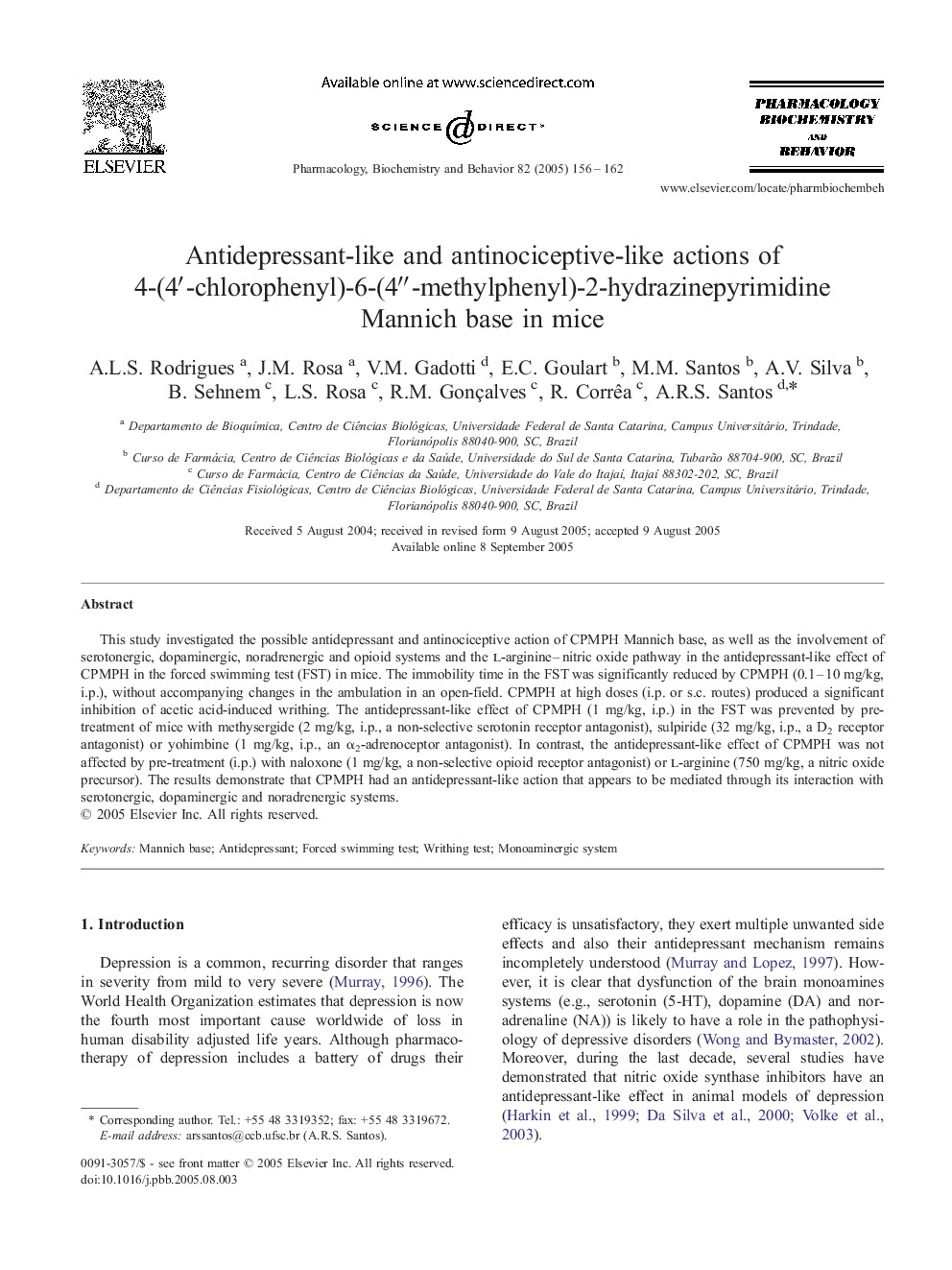| Article ID | Journal | Published Year | Pages | File Type |
|---|---|---|---|---|
| 10838373 | Pharmacology Biochemistry and Behavior | 2005 | 7 Pages |
Abstract
This study investigated the possible antidepressant and antinociceptive action of CPMPH Mannich base, as well as the involvement of serotonergic, dopaminergic, noradrenergic and opioid systems and the l-arginine-nitric oxide pathway in the antidepressant-like effect of CPMPH in the forced swimming test (FST) in mice. The immobility time in the FST was significantly reduced by CPMPH (0.1-10 mg/kg, i.p.), without accompanying changes in the ambulation in an open-field. CPMPH at high doses (i.p. or s.c. routes) produced a significant inhibition of acetic acid-induced writhing. The antidepressant-like effect of CPMPH (1 mg/kg, i.p.) in the FST was prevented by pre-treatment of mice with methysergide (2 mg/kg, i.p., a non-selective serotonin receptor antagonist), sulpiride (32 mg/kg, i.p., a D2 receptor antagonist) or yohimbine (1 mg/kg, i.p., an α2-adrenoceptor antagonist). In contrast, the antidepressant-like effect of CPMPH was not affected by pre-treatment (i.p.) with naloxone (1 mg/kg, a non-selective opioid receptor antagonist) or l-arginine (750 mg/kg, a nitric oxide precursor). The results demonstrate that CPMPH had an antidepressant-like action that appears to be mediated through its interaction with serotonergic, dopaminergic and noradrenergic systems.
Related Topics
Life Sciences
Biochemistry, Genetics and Molecular Biology
Biochemistry
Authors
A.L.S. Rodrigues, J.M. Rosa, V.M. Gadotti, E.C. Goulart, M.M. Santos, A.V. Silva, B. Sehnem, L.S. Rosa, R.M. Gonçalves, R. Corrêa, A.R.S. Santos,
